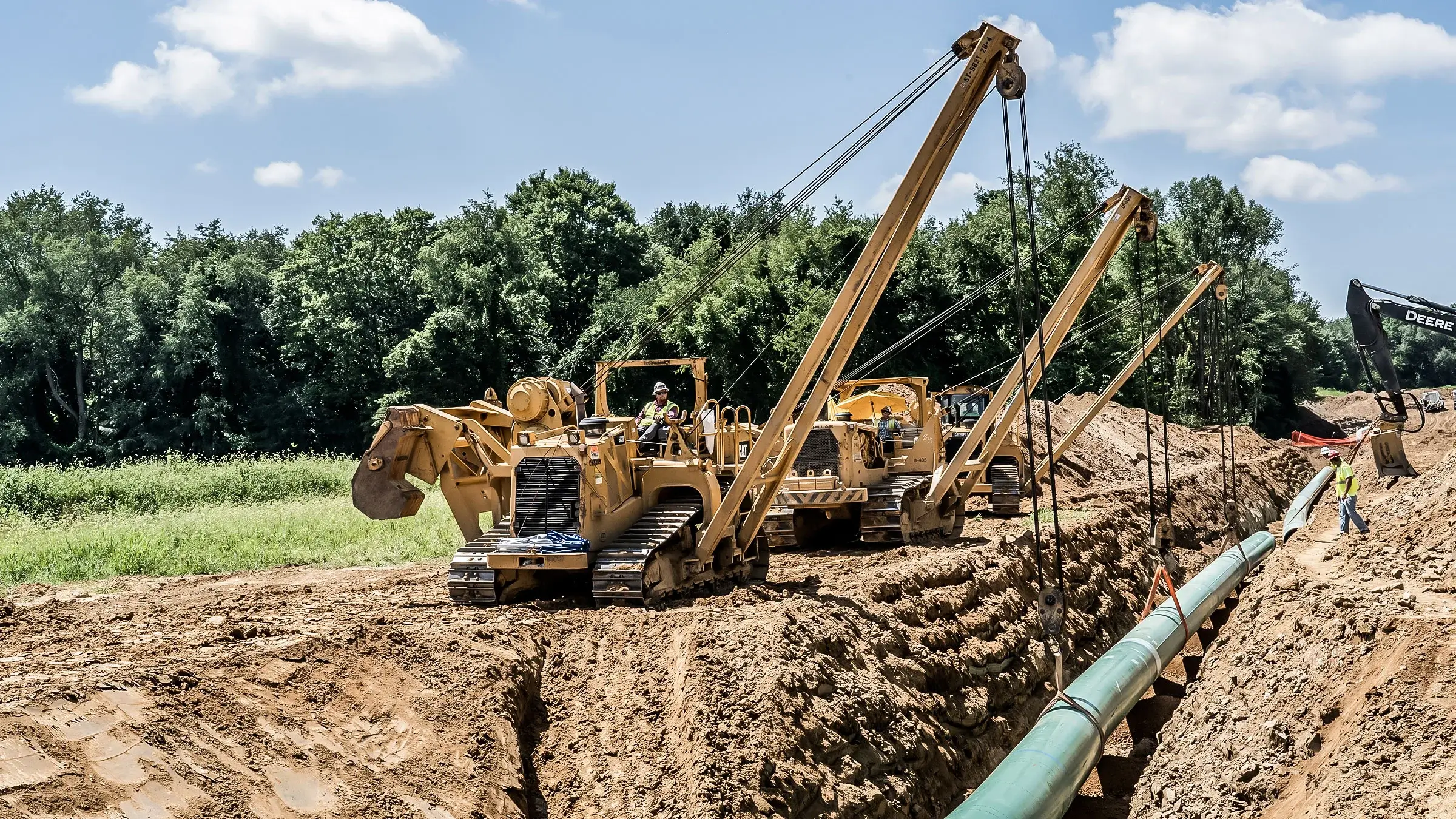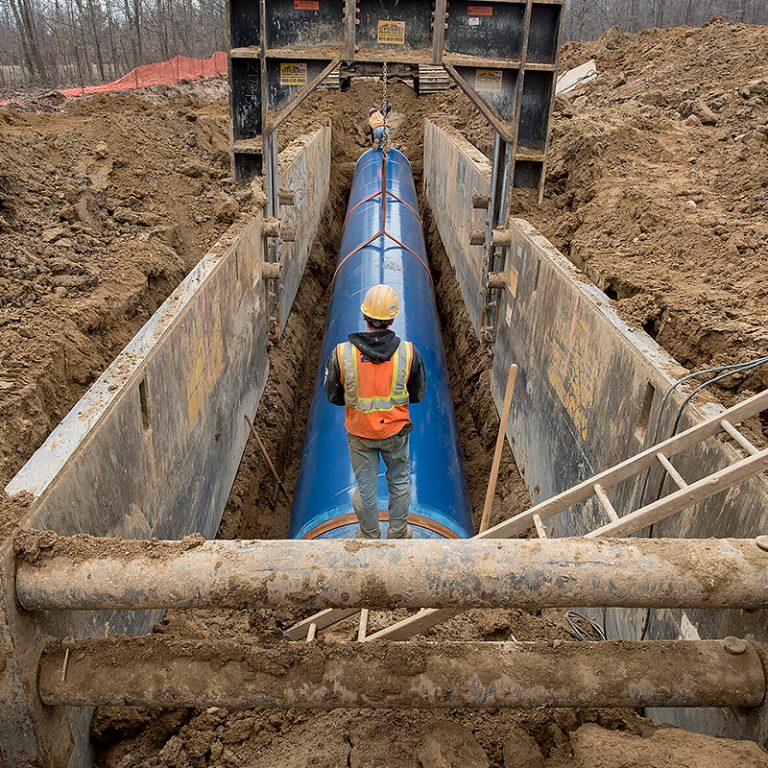Emergency Planning With Creek Pipe contact Info Ready
The Significance of Pipeline Construction: Exploring the Providers Provided in the Sector
Pipeline construction is a crucial element of modern-day framework. It helps with the transport of vital resources like oil, gas, and water. The sector incorporates different services, including planning, website preparation, and installment. Each stage calls for precision and adherence to security criteria. As neighborhoods depend upon these systems for their livelihoods, recognizing the complexities of pipeline construction discloses its value and possible difficulties. What elements affect the success of these projects?
Review of Pipeline Construction Services
Pipeline construction solutions encompass a variety of customized tasks designed to assist in the setup of pipes for moving numerous materials, consisting of oil, gas, and water. These services normally include website prep work, excavation, installment of pipe sectors, and backfilling. Experienced labor and innovative devices are basic for ensuring each stage is carried out with accuracy and safety.Safety procedures are vital, as these projects typically include collaborating with hazardous materials and in tough environments. Quality control measures ascertain that the pipes fulfill market standards and laws. Furthermore, the services may include trenchless modern technology, which lessens surface area disruption.Environmental considerations play a considerable function in pipeline construction, calling for assessments and mitigations to secure bordering ecological communities. On the whole, pipe construction solutions are vital for establishing the infrastructure required for power and water distribution, supporting both economic development and social requirements.
Planning and Style in Pipeline Projects
Efficient planning and style are important elements of effective pipe tasks, making sure that all aspects are meticulously addressed before construction starts. This stage entails detailed expediency researches that assess the technological, financial, and environmental elements influencing the job. Engineers and developers collaborate to produce detailed strategies that outline the pipe route, products, and construction methods, lining up with regulatory requirements and market standards.Advanced software program and modeling techniques are typically utilized to mimic different situations, maximizing the design for performance and security. Environmental influence analyses are carried out to reduce possible harm to ecosystems and neighborhoods, reflecting a commitment to lasting techniques. Additionally, stakeholder engagement is essential, fostering interaction and resolving concerns from impacted parties. Ultimately, reliable preparation and layout set the foundation for a pipeline job, minimizing threats and making sure a streamlined construction procedure, eventually contributing to the total success of the operation.
Site Preparation and Excavation
Comprehensive site preparation and excavation are vital action in the pipeline construction procedure. This phase includes a detailed assessment of the land where the pipe will be set up. Project teams conduct surveys to recognize soil kinds, topography, and existing utility lines to guarantee a safe and effective excavation. Appropriate website preparation reduces environmental influence and promotes smoother construction operations.Excavation complies with, where heavy machinery is employed to eliminate soil and rock, producing a trench that fulfills the defined depth and width for the pipeline. This process needs to adhere to safety policies and environmental guidelines to stop damage to surrounding ecosystems.Additionally, erosion control measures are executed to support the site throughout and after excavation. Reliable site preparation and excavation contribute considerably to the overall success of pipeline projects, laying a solid foundation for the subsequent stages of construction.
Pipeline Installation Techniques
Pipeline installation methods are crucial for the effective execution of facilities projects. Two famous methods include trenchless innovation, which reduces surface interruption, and the open-cut excavation procedure, known for its uncomplicated technique. Each method offers unique advantages and factors to consider depending upon task needs and ecological elements.
Trenchless Modern Technology Approaches
While traditional techniques of pipe installment frequently include comprehensive excavation, trenchless technology methods use a much more reliable and ecologically friendly option. These ingenious methods, such as straight directional drilling and pipeline bursting, decrease surface disturbance by permitting the installation of pipelines without substantial excavating. This not just minimizes the environmental influence but likewise significantly lowers labor and reconstruction expenses. Trenchless methods assist in the installation of pipes in urban locations where conventional excavation would certainly be not practical or damaging to existing infrastructure. Additionally, these methods can fit numerous soil kinds and problems, making them versatile options for pipe construction. Inevitably, trenchless technology stands for a considerable development in the pipe industry, advertising sustainability and functional efficiency.

Open-Cut Excavation Refine
Open-cut excavation remains a fundamental method in pipe installation, defined by the straight excavation of a trench to lay pipes. This technique entails getting rid of dirt and other products to produce a trench of adequate depth and size, permitting the positioning of pipelines at the needed quality. Open-cut excavation is often chosen for its cost-effectiveness and simpleness, particularly in locations with steady soil problems. However, it can interfere with surface activities and calls for mindful preparation to handle web traffic and environmental effects. Precaution need to be executed to shield workers and nearby framework throughout the excavation process. Generally, while open-cut excavation may not be ideal for all surfaces, it stays an extensively made use of approach in pipeline construction.
Examining and Quality Assurance
Testing and quality control are essential elements in pipeline construction, making sure that setups meet recognized safety requirements and efficiency requirements. Various assessment methods and approaches are cast iron waste pipe used to examine material top quality and adherence to regulative compliance. This methodical method assists recognize possible concerns prior to they rise, safeguarding the integrity of the pipe system.

Examination Techniques and Techniques
Inspection strategies and techniques are essential parts in making sure the stability and safety and security of pipeline construction. Numerous techniques, including visual inspections, ultrasonic testing, and radiographic assessments, are employed to detect problems and confirm quality. Aesthetic examinations permit the recognition of surface area abnormalities, while ultrasonic testing utilizes acoustic waves to analyze wall surface thickness and situate problems inside. Radiographic assessments involve X-rays or gamma rays to generate photos of the pipeline's structure, exposing surprise concerns. Additionally, stress testing is conducted to examine the pipe's honesty under operational conditions. These techniques collectively add to an extensive understanding of the pipeline's condition, enabling timely upkeep choices and making certain compliance with market requirements. Efficient assessment is important for protecting against failings and promoting long-term operational safety.
Safety Requirements Conformity
Making certain compliance with safety standards is critical in pipe construction, as it straight affects the job's general high quality and dependability. Sticking to well-known laws and standards warranties that construction techniques reduce dangers connected with pipeline installation and operation. Creek Pipe Texas oilfield. Rigorous testing protocols, including non-destructive screening and stress evaluations, are important in verifying that pipelines can withstand the operational stresses they will experience. Quality control actions are also important, as they establish a structure for regular monitoring and examination throughout the construction procedure. By focusing on safety criteria compliance, companies not only shield employees and the setting however additionally improve the honesty of the pipeline, ultimately resulting in long-lasting functional success and public count on the facilities
Material Top Quality Examination
Product high quality assessment plays a substantial duty in the overall honesty of pipeline construction. This procedure involves extensive testing and high quality guarantee measures to ensure that materials meet sector criteria and specifications. Various examinations, including tensile strength, rust resistance, and weld stability evaluations, are performed to determine any type of possible weaknesses. A detailed assessment not just ensures the performance of the pipe however additionally enhances security and resilience over its life expectancy. In addition, applying quality assurance methods assists alleviate threats connected with material failures, which can result in pricey repairs and environmental threats. By prioritizing material top quality evaluation, business can guarantee conformity with regulatory needs while cultivating confidence among stakeholders in the integrity of their pipeline systems.
Repair And Maintenance Solutions
Upkeep and repair work services play an important role in the click to read more longevity and performance of pipeline systems. These solutions encompass routine examinations, troubleshooting, and restorative activities to attend to deterioration, leakages, and other concerns that might occur gradually. Competent specialists utilize advanced technologies such as ultrasonic screening and wise pigging to monitor pipeline honesty, making sure that any kind of possible troubles are determined early.Additionally, upkeep programs commonly More hints consist of arranged safety nets created to enhance system reliability and lower the possibility of unexpected failures. Repair solutions might include the substitute of broken areas, securing leaks, or using trenchless innovation for marginal disturbance.
Environmental Conformity and Precaution
Pipeline systems not just require recurring repair and maintenance to work efficiently yet likewise have to comply with rigid environmental conformity and precaution. These regulations are crucial for lessening environmental influence and making sure public safety and security. Business in the pipe construction industry apply extensive ecological assessments prior to job initiation, identifying prospective risks to wildlife and ecosystems.Furthermore, adherence to security methods safeguards employees and bordering communities. This includes regular training on emergency action and spill avoidance techniques.To maintain compliance, markets use keeping track of innovations to identify leakages and various other abnormalities in real-time. Environmental administration strategies are typically established to describe steps for dealing with unpredicted problems throughout construction.Ultimately, stringent adherence to ecological conformity and safety measures not only fulfills legal obligations however likewise cultivates sustainable techniques within the industry, advertising a balance between infrastructure advancement and environmental stewardship.
Regularly Asked Concerns
What Career Opportunities Are Offered in Pipeline Construction?
Job possibilities in pipe construction incorporate duties such as task supervisors, designers, welders, and security examiners. These settings require diverse skills, offering pathways for growth in an important sector of framework development and power circulation.

How Do Pipeline Projects Effect Resident Communities?
Pipeline tasks greatly influence regional communities by affecting economic development, supplying task possibilities, and improving facilities. However, they might also elevate worries concerning ecological effects, land usage, and prospective interruptions to neighborhood cohesion and all-natural ecological communities.
What Technology Is Used in Modern Pipeline Construction?
Modern pipeline construction uses advanced technologies such as GIS for mapping, drones for aerial studies, and automated welding systems to boost performance, security, and accuracy, ultimately assisting in the effective transportation of sources across different terrains. Creek Pipe reviews.
How Are Pipeline Construction Expenses Approximated?
Pipeline construction costs are estimated through comprehensive assessments of products, labor, devices, and governing needs. Factors like terrain, job size, and environmental factors to consider likewise significantly affect the total spending plan and economic planning for construction.
What Are the Most Significant Challenges in Pipeline Construction Projects?
The largest challenges in pipeline construction tasks consist of governing conformity, ecological worries, logistical issues, safeguarding funding, and managing labor shortages. Each factor can significantly impact timelines and budgets, complicating the overall implementation of the task.